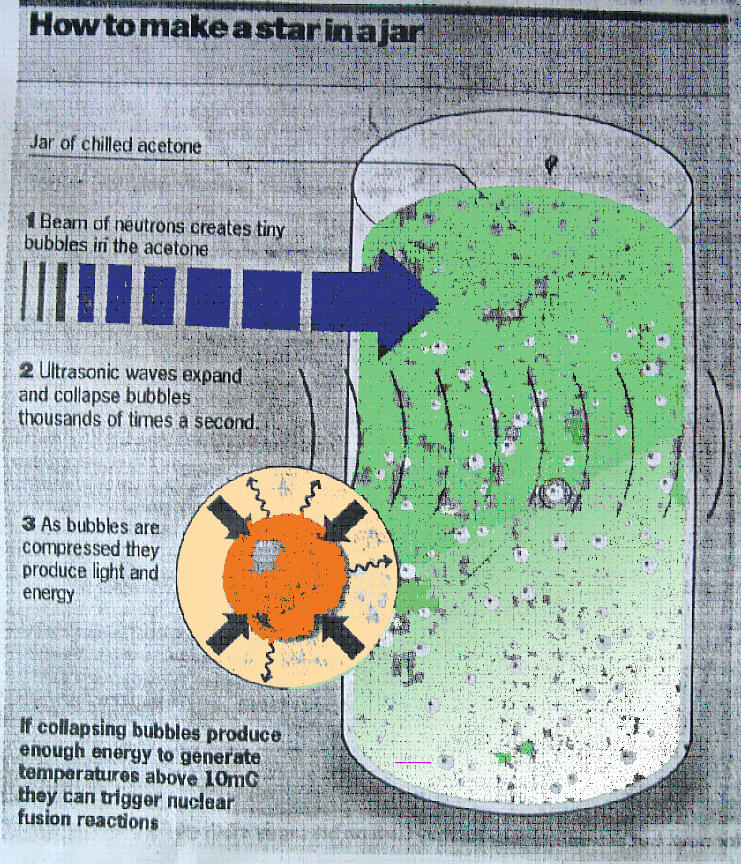Applications of Sonochemistry(SC)
|
Sonofusions The breaking new field of science "sonofusion" began and launched in late 2001 with a simple idea. This is a further application adapted from bubble sonoluminescence. When bubbles are compressed the produce light and energy so if the conditions are right, this can lead to new form of clean and unlimited energy similar in the film 'Chain Reaction'. |
||||
|
Other applications |
||||
|
|
In Sonoluminescence, squashing these generated bubbles with such ferocity produces brief flash of light and heat. If we can get the bubbles generate enough heat, we might just be able to make atoms in the surrounding liquid fuse together ; a simple way ,in theory at least,of producing nuclear fusion and the vast supply of energy promises.
|
|||
| It sounds easy, but if it were, it
would have done decades ago. The show stopper is that the temperatures needed to
generate fusion are mind-bogglingly high ie. temperature at the heart of the
Sun. Many scientists doubt that sonofusion will ever get as hot as that. The
highest temperature produces this way, by S Putterman's group at University of
California Los Angeles, is 1 million C. It is hot, but not enough.
|
||||
| Another approch was developed and done by Taleyarkhan's group, it was taken in a beaker of acetone and bombard it with pulses of neutrons. The idea was that the neutrons would strike molecules in the acetone and create tiny bubbles, each around 10,000 times smaller than the width of a human hair. Then the beaker was blasted with ultrasound, which stretched the tiny bubbles until they were a few millimetre across, before swiftly crushing them again. |
 Fig10 - Taleyarkhan's experiment |
|||
| Compared with the old method, Taleyarkhan didn't use any old nail varnish remover for his experiment. Instead, the hydrogen atoms in the acetone were swapped for deuterium, a form of "heavy hydrogen" in classical fusion idea and neutrons were produced as products. However there were some flaw in the work and the experiments has not been approved from reviewer. | ||||
| Even it is not yet successful, the evidences already show a big future of sonofusion which might be the new source of cheap clean energy in our life. | ||||
Picture from:
The Guardian , page 5, 11/03/04
